Attractions on the south part
Turning clockwise along the south part of the peninsula would bring you to the following points of interest...
Kita-Ke (多家)
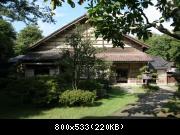
Address - 石川県羽咋郡宝達志水町北川尻ラ-4
Telephone - 0768-32-0171
Opening Hours - 8:00~16:30
Entrance fee - 500 円
Internet -
houdatu.notonokaori.com/kitake.html (some explanations in Japanese)
House which belonged to the Kita family. This house is build on low grounds, which means that the surrounding grounds are dominating it! This unusual location was choose because the Kita family did not want to provoke the ruling family by building their main house on high grounds...
We were guided in the house by a descendant of that Kita family, who used to live in that same house 30 years ago, and provided comprehensive explanations about history and life in this area of Japan. The house is located in a rather wild garden, which obviously would need some serious refreshing. On the other hand, the house itself has been completely restored and is in pristine condition.
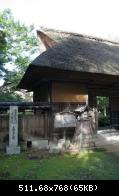
The first sight in that garden is a building serving as a door, which is the oldest construction on the grounds, but was in fact brought here by boat when the house was built. Note the structure of the roof, characteristic of Noto area.
The main house itself is suppose to date back to 1803, although its style suggests a construction between 1804-1830. It was used both as an official and private building, which explains the very unusual number of entrances, all built on the same side of the building: 4 different doors for the head of the family, the samurai, the members of the family and the servants... Indeed, visiting its inside is very interesting, and you will notice that the rooms used by the head of the Kita family are about 15 cm higher than the rest of the building.
The Chirihama Driveway (千里浜なぎさドライブウェイ or 千里浜ドライブウェイ)
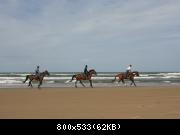
Internet -
www.chirihama.com (with pictures and movies)
The Chirihama Beach Drive runs for about 8km from Imahama to Chirihama Beach. It is famous for its densely packed sand, which allows vehicles to drive directly on the sea shore (there are very few places in the world where this is possible - heck
this picture if you want to see details of the sand's structure). It is really fun to drive so close to the water, so you should really do so if you are around. Note that the beach itself has too many detritus to be appealing for swimmers. Along the shore, you will find some small restaurants serving fresh shells.
Note that the area is "known" for its... UFOs! Mysterious flying objects were reported here even in ancient Edo manuscripts, and most of "UFO apparitions" in Japan take place there - there is even an UFO museum!
Keta-taisha (気多大社)
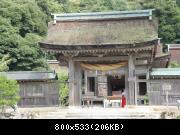
Address - 石川県羽咋市寺家町
Telephone - 0767-22-0602
Opening hours - 8:30 - 16:00
Entrance fee - free
Internet -
www.keta.or.jp/honden
Keta Taisha Shrine, in Hakui, is the most important shrine in the Noto area. While it is said to be about 2000 years old and one of the Great National Shrines, the present construction dates from 1787. Also there is a smaller worship place dedicated to the God of fishermen - Ebisu - called Wakamiya-sha, which is said to the oldest building of Ishikawa-ken.
A priestess is welcoming visitors at the entrance of the shrine, surrounded by woods. The main building is worth having a look at, also there is nothing really special about it. While many shrines are partially or completely painted in red, this one has no color at all, and the appearance of old wood increases the usual feeling of Noto Peninsula: an isolated place out of modern Japan...
Myojo-ji (妙成寺)
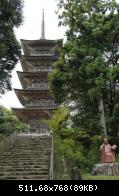
Address - 石川県羽咋市滝谷町ヨー1
Telephone - 0767-27-1226
Opening hours - 8:00 to 17:00 (16:30 from October to March)
Entrance fee - 500 yen
Internet -
www4.nsk.ne.jp/myojoji
Head temple of the Nichiren Sect in the Hokuriku region of Japan, this temple was founded in 1294 bt Nichizo. There are a couple of interesting buildings on the grounds of the temple, including Goju-no-to, a 34-meters tall five-stories pagoda completed in 1618. Wandering around the graves, visitors can also visit Joroku-do, a hall containing a wooden statue of Shakyamuni Buddha (5 meters tall, 1686); this statue was restored lately to remove all alterations that were made last centuries, and recovered now its original appearance. An English pamphlet is provided to foreign visitors.
From there, you can either continue to the north (check following part) or switch to the east, to the direction of Wakura Onsen...
Wakura Onsen (和倉温泉)
Internet -
www.wakura.or.jp
With its water discovered 1200 years ago, and its location facing a nice bay in the sea, Wakura Onsen could had been a great onsen town. Unfortunately, the shore front is covered with rather tall, concrete hotels and ryokan whose main goal is obviously to pack as many tourists as possible in their rooms. Because of them, the town itself is much less appealing... If you enter in one of those large hotels, you might be however surprised on how much luxurious they look! We were amazed by seeing how the architects mixed Japanese traditional design with occidental features from the 80s...
Still, some small ryokan are available for those who would like to stay in a more authentic place! A reasonably priced option is the annexe of the Togetsuan ryokan (宝仙閣別館 渡月庵), telephone 91-767-621788, which was built in the Taisho-era. Located just next to a pond, it is really nice from outside... but unfortunately is surrounded by ugly concrete buildings on almost all sides!
If you pass in Wakura Onsen, don't forget to soak in one of its famous baths! But you can miss the public bath, which has the worst rotenburo I have ever seen...